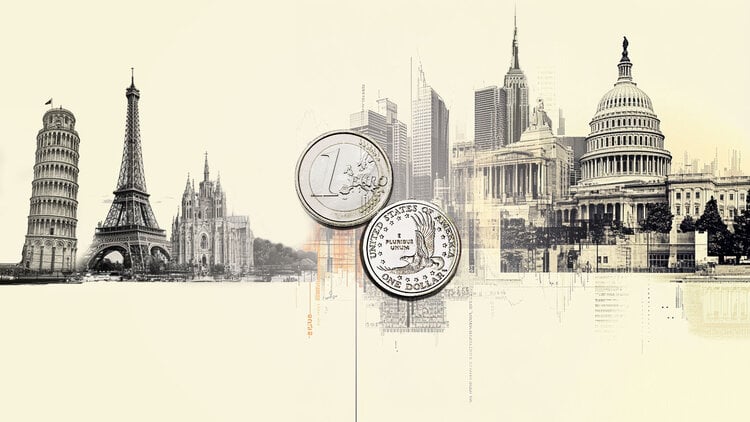By Anjani Trivedi
As energy security becomes a source of growing stress, it is clear that large-scale, reliable use of renewable energy sources remains a distant reality for many countries. This allowed a more controversial – but almost perfect – alternative to return: nuclear energy. The problem is that no one wants a reactor in their backyard and memories of past accidents remain a source of serious concern.
Cheaper, cleaner, competitive
However, with rising costs and few solutions, both governments and companies are turning to nuclear as a cleaner and cheaper source of energy to help them achieve their ambitious goals in the face of climate change.
Even if it is a few years away, the development of nuclear energy sources and investments in it, as well as in its storage methods, could ensure that industrial operations which are highly dependent on raw material preheating processes and high temperatures will be able to to operate while the world will navigate the current energy crisis. With all the “squeaks” in the supply chain last year, power outages are the last thing consumers and businesses need.
In Japan, the weighted average cost of this type of energy is much lower than that of utility solar and offshore wind energy. A recent survey showed that more than 80% of Japanese companies are in favor of restarting nuclear reactors to meet energy needs.
Kansai Electric Power resumed work on an inactive reactor earlier than planned to manage energy demand. The reset of the Mihama No. reactor. 3 on the grid will reduce the need for liquefied natural gas and the company’s nuclear production could increase by 76% by 2023, as it will restart more reactors, according to Bloomberg Intelligence.
In India and China, nuclear power is also proving competitive, where more polluting options such as coal have now become more expensive. South Korea is focusing on reviving nuclear energy, which accounts for about 27% of the country’s energy mix.
Earlier this year, the Biden government announced its intention to implement a $ 6 billion nuclear credit program that supports the operation of reactors – “the nation’s largest source of clean energy” – across the country.
Last week, the US Department of Energy provided more than $ 60 million for 74 nuclear projects. The British engine manufacturer Rolls-Royce, with the support of the British government and other investors, said late last year that it was going to start building smaller and cheaper reactors. Some of its compact modular reactors are expected to be operational by 2029, with regulatory procedures already in place.
The return to nuclear power makes sense: the cost of extending the life of power plants and building reactors in countries that have remained faithful to this form of power generation is cheaper and more competitive. Those countries that did not bet on it are now struggling with their aging reactor fleet and the lack of alternative energy sources.
Concerns and the need for popular acceptance
The biggest obstacle, however, is the deep concerns about the safety and disposal of nuclear waste. Memories of nuclear accidents such as those at Three Mile Island in 1979, Chernobyl in 1986, and Fukushima Daiichi in 2011 continue to be strong in both collective and corporate memory. However, what is often overlooked is that in deaths per unit of electricity, nuclear power remains at the bottom of the list, while coal is at the top.
The progress that has been made in addressing nuclear energy issues is being underestimated. For example, safety in reactors is usually based on an assessment of core melting. To address these concerns, 14 countries have embarked on risk reduction plans and the development of a new generation of reactors. These systems will use different refrigerants, such as molten salts or liquid metal, and methods that ultimately make nuclear power generation cleaner, safer and more efficient. Reactors using such materials are intended to reduce or even eliminate the production of hazardous gases which explode under pressure.
A number of start-ups are working to make nuclear energy more affordable. NuScale Power is building small modular reactors that could eventually power 60,000 homes per unit. The company, which has received more than $ 450 million in support from Washington, is working with the governments of the United States and Romania to build a plant in the Eastern European country.
Sweden’s Seaborg Technologies, meanwhile, has partnered with Samsung to build a floating, compact molten salt reactor that could change energy use in logistics. TerraPower, backed by Bill Gates – which also focuses on small reactors – has partnered with South Korea’s SK Group heterogeneous industrial group to build such plants.
Nuclear power is a key candidate to be the solution or at least to fill large energy gaps in the coming years. In addition to the existing nuclear fission used in commercial reactors, startups are now moving to nuclear fusion technologies and have raised billions of dollars from actors such as Tiger Global and Gates.
Rejection of this source of energy due to fear and teratologies are not going to go very far. Companies and countries should not hesitate to talk openly about nuclear energy and inform people. Popular acceptance is the key. Without it, we will breathe dirty air and live with power outages.
Source: Bloomberg
I’m Ava Paul, an experienced news website author with a special focus on the entertainment section. Over the past five years, I have worked in various positions of media and communication at World Stock Market. My experience has given me extensive knowledge in writing, editing, researching and reporting on stories related to the entertainment industry.







